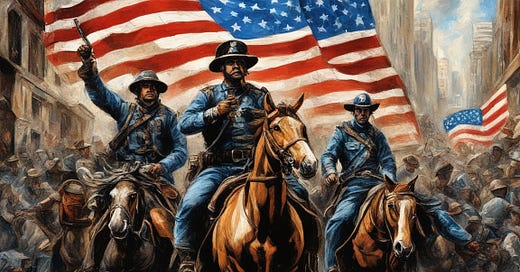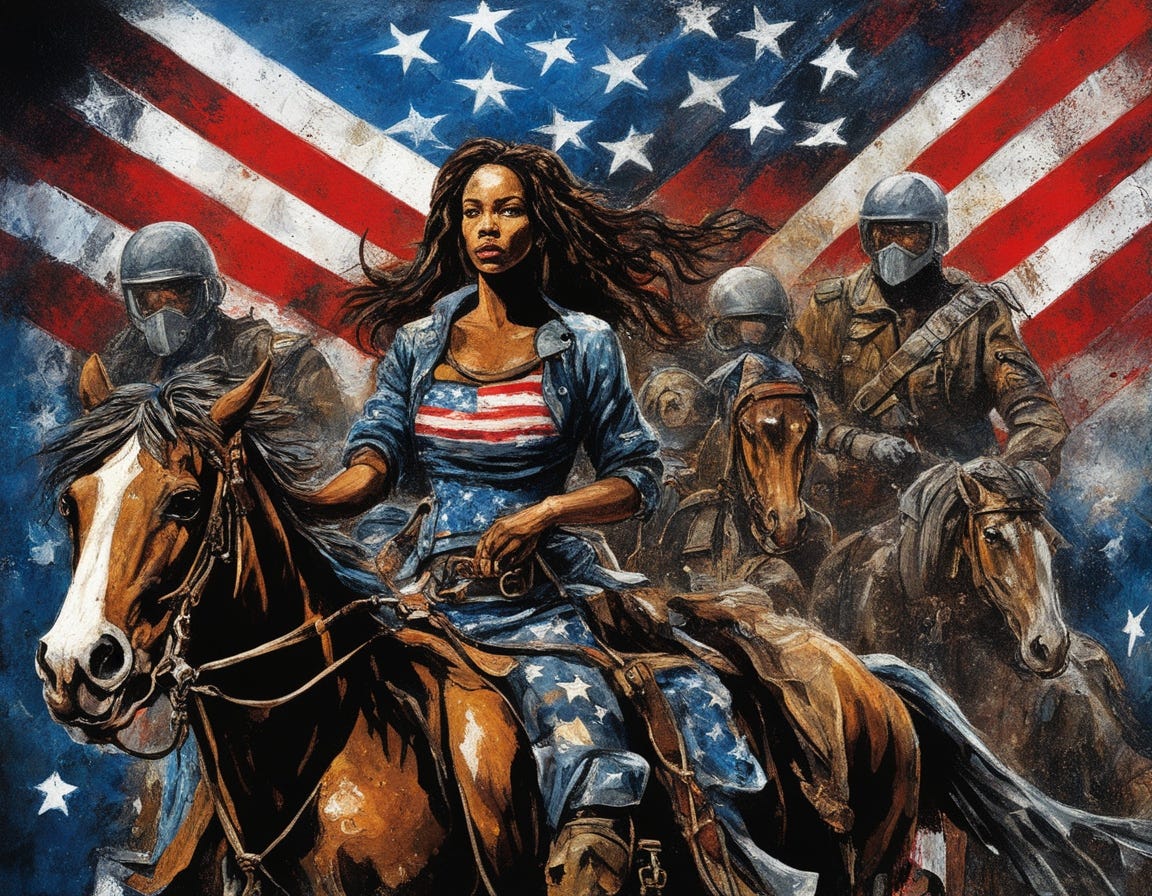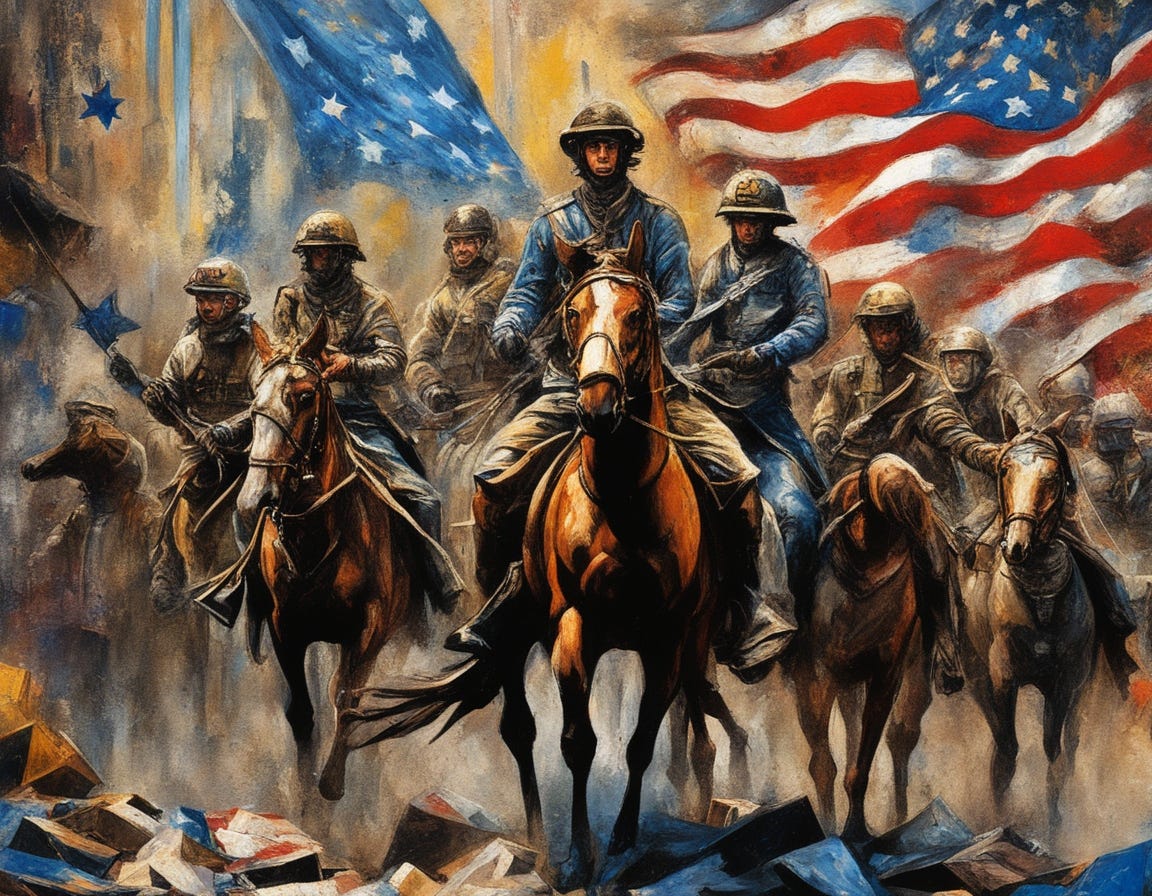FOR THE RECORD: horseback is worse
unique and enhanced threats to civilians of law enforcement on horseback
Law enforcement on horseback presents unique and enhanced threats to civilians that differ from those posed by officers on foot or in vehicles. These threats stem primarily from the size, power, and unpredictability of horses, as well as their use in controlling crowds.
THREAT BREAKDOWN
Physical Harm from the Horse
Trampling: A horse can cause severe injury or death if it tramples a person, especially in a dense crowd where movement is limited. Kicks & Bites: Horses can react unpredictably to loud noises or sudden movements, leading to accidental (or even aggressive) kicks or bites. Crushing Injuries: A horse weighing over 1,000 pounds can unintentionally crush limbs or bodies against barriers or other people.
Psychological Intimidation
Sheer size and motion of a horse can be intimidating and used to exert psychological pressure on crowds, potentially escalating tension. The combination of animal unpredictability and human control adds a layer of uncertainty that can increase panic or fear responses in civilians.
Reduced Visibility & Situational Awareness
Officers mounted on horses are elevated, which gives them a better vantage point. But also can reduce their awareness of individuals close to the horse, especially in chaotic situations. Civilians, especially children or individuals with disabilities, may not be visible to mounted officers. And are at higher risk of being overlooked or injured.
Unpredictability of Animals in Crowds
Horses, despite training, can spook in response to stimuli like fireworks, sirens, shouting, or objects thrown. A spooked horse can bolt or buck, endangering civilians nearby regardless of the officer’s intent or control.
Disproportionate Force in Crowd Control
Horses are often used for crowd dispersal, where their size and momentum can serve as a “moving wall.” This method can sweep up uninvolved individuals, cause falls, trampling, or injury from being shoved or pushed against barriers.
Limited Legal Accountability
Incidents involving horses often fall into legal gray areas, where accountability is blurred between the officer’s control and the animal’s actions. Civilian complaints may be harder to pursue if injuries are attributed to the horse’s “natural behavior.”
🎯Specific Populations at Greater Risk...
Children & Elderly: less able to evade or withstand contact with a horse. Folks with Mobility Impairments: may not be able to move away quickly enough. Protesters or Crowds in Confined Spaces: limited movement space increases injury risk.
Ethical & Policy Considerations
There is ongoing debate over whether the risk-to-benefit ratio of mounted units is justifiable, especially in peaceful protests or densely populated events. Alternatives, such as bike patrols or drones, may offer similar visibility without the same physical threat to civilians.
If you are confronted or attacked by law enforcement on horseback - especially during protests or crowd dispersals - your safety depends on quick, calm decision-making and awareness of the horse’s behavior.
BEST PRACTICES TO PROTECT YOURSELF
Key Goals: Avoid injury from trampling, crushing, or panicked horses. Stay calm and visible. De-escalate and escape if possible.
Best Ways to Protect Yourself
Create Distance - Immediately. Move laterally (sideways) away from the horse’s path. Not directly in front or behind. Horses are trained to move forward, not to track sideways targets. A few feet can make a huge difference. Look for gaps between horses, barricades, or exits to escape pressure zones.
Stay Visible & Upright. Avoid falling or crouching - horses may not see folks low to the ground and are more likely to step on them. Keep your hands up and visible, palms out, showing you're not a threat.
Never Touch or Hit the Horse. Striking a horse can be seen as assaulting an officer and can provoke a violent reaction from both the horse and rider. Horses may react unpredictably if they feel threatened - kicking, biting, or bolting.
Do Not Run Toward or Behind the Horse. Behind the horse is the most dangerous zone - if it kicks, it can cause severe injury or death. Running may trigger a chase instinct or panic in the horse, escalating danger.
Use Obstacles Strategically. Put physical barriers between you and the horse, such as a pole, bench, vehicle, or fence. These can disrupt a horse’s path and reduce your exposure. In tight spaces, walls can protect one side of your body, so you only need to monitor the open side.
Be Aware of the Herd Effect. Mounted units may move in formation. Watch how they’re positioned. Try to avoid being funneled into confined or enclosed spaces. Avoid the center of tightly packed crowds, where escape is harder and horses may be pushed into people.
MINDSET & PREPARATION
If You Expect Mounted Units at Protests: Wear sturdy shoes to prevent slips or foot injuries. Carry minimal gear - large bags or signs can get caught or entangled. Identify multiple escape routes from your location. Avoid earbuds or loud music - keep situational awareness high.
If You're Knocked Down: Curl into a ball and protect your head and vital organs. Do not try to grab the horse’s reins or legs - it’s extremely dangerous. Once the danger passes, move away slowly and upright.
Know Your Rights - but Prioritize Survival. While you may have a legal right to be in a public space or to protest peacefully, your priority in the moment should be de-escalation and safety. You can document or report misconduct after you've exited the danger.
What's especially important to know about law enforcement on horseback at protests is that mounted units are used intentionally in protests for ...
- control,
- intimidation,
- and dispersal,
... and they bring unique dynamics you should be prepared for.
Their role is often to assert authority, disrupt cohesion, and pressure dispersal - not to engage peacefully.
Tactics to Watch Out For. Flanking & Funneling: Horses are used to push crowds into tight areas, making folks more compliant or easier to disperse. Charge Lines: Officers may advance rapidly in a line - this can be disorienting and dangerous, especially in panic. Individual Targeting: Mounted units may single out vocal protesters, medics, or press if identified as agitators or organizers. Use in Tandem with Other Units: Mounted police often coordinate with riot squads, bike police, or tear gas to confuse or trap crowds.
Always watch how mounted units are positioned. Their movement is often a sign of larger tactical shifts.
If you see mounted units approaching, do not wait to act - move calmly but quickly out of their path.
Documentation Tips. Record the badge number (or horse unit identifier) and behavior of both horse and rider when possible. Capture Context: were folks peacefully protesting? Were horses used to push folks into barricades? Use your phone or partner up with others to record from safe distances.
Documentation helps legal or public accountability - though, never at the expense of your safety.
Gear & Clothing Tips. Wear shoes with strong soles - foot injuries from hooves are common. Avoid loose clothing or hanging bags - they can catch or drag. Stay hydrated and aware of exits; never trap yourself between horses and barriers.
Assume you may need to move quickly and stay upright.
In Groups, Use Crowd Solidarity. Groups linked arm-in-arm or with backpacks can resist being broken up by horses - but only if it’s safe and escape routes are open. If trapped, try to compress as a group and avoid shoving or panicking.
Coordination is power - still, never fight a horse. Prioritize collective de-escalation.
Mounted police are a strategic pressure tool at protests. If they show up, something is likely shifting tactically, and it’s time to reassess your position, safety, and plan.
📌 REMEMBER: Safety First
If confronted by mounted units, focus on avoiding danger and documenting later. Your well-being is always priority.






